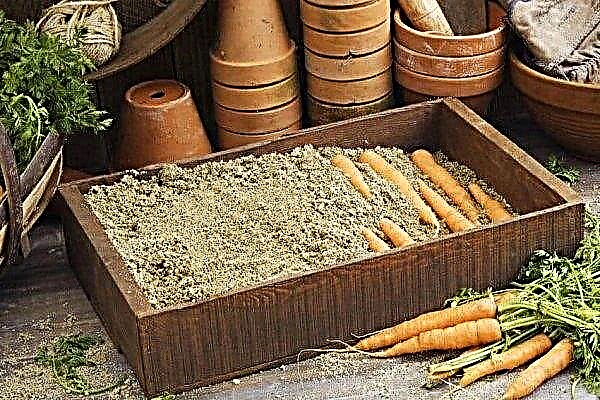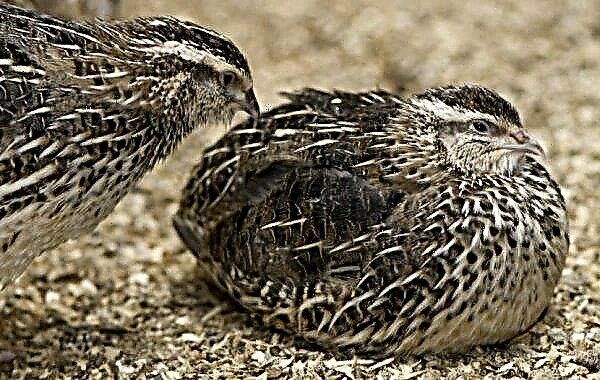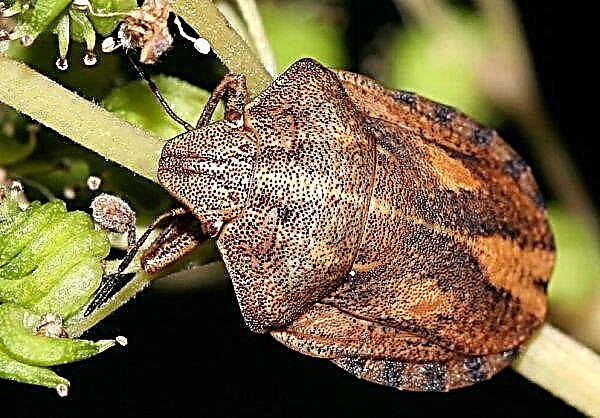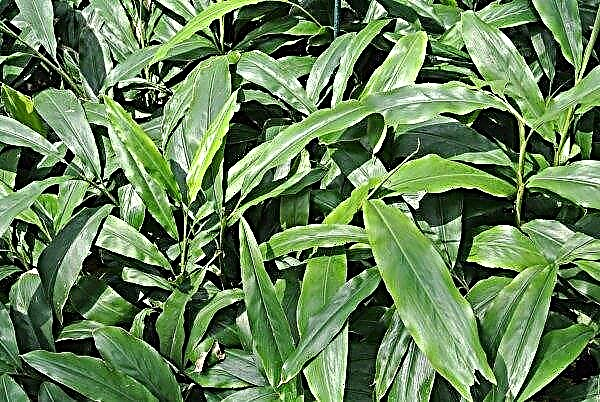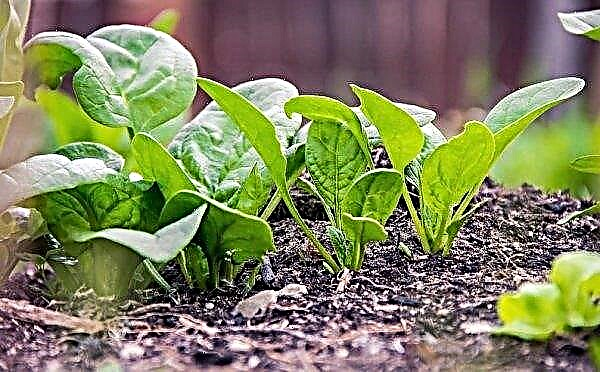To get a solid grape harvest in frosty regions, you need to be able to choose the right species that is specially bred for difficult climatic conditions. Due to the short warm period, cold-resistant, early-ripening and rapidly ripening species should be noted. There will be a further story about which varieties correspond to such characteristics, as well as about the nuances of cultivation and care.
The best grape varieties for Siberia
Currently, grapes in Siberia are not at all rare. The history of its cultivation in the northern regions began more than half a century ago. They didn’t learn to cultivate the vine in Altai right away, because the climatic conditions did not meet the requirements of the heat-loving plant: winter is long, frosty, significant fluctuations in daily temperature, a short growing season. But still breeders managed to bring such varieties.
Did you know? The most expensive grape in the world from which wine is not made is the Roman ruby. This Japanese variety is consumed exclusively fresh. Grapes are sold annually at auction. And in 2016, a record sum was awarded for a bunch with 30 berries - $ 10,900.
Early
This class of grapes is sung in the northern regions for 115–125 days, especially the early ones will need 105–115 days, and very early - up to 105 days.
For Siberia, the following varieties are suitable:
- Tukai. High-yielding grapes ripening in 95-105 days. It has the ability to grow widely, on one vine at the same time many clusters ripen, which can be stored on the vine for a long time and not rot. The brushes are large, sweeping, each weighing 800–1000 g. The fruits are medium-sized, amber-green, weighing up to 4 g, have a nutmeg aroma. The peel of the fruit is dense, which is good for transportation and does not change the taste. So that the bush does not overload, the inflorescences are normalized, removing excess ones. Tokai grapes are cold-resistant, tolerates up to -35 ° C. The culture is not resistant to harmful insects, but with proper care, no diseases are terrible for the culture.
- Solovyova-58. The hybrid was bred in Ukraine by the breeder Solovyov and today is grown from the Baltic to the Siberian region. The earliest ripe grape, for which an average temperature of + 22 ° C is sufficient for ripening. Blooms with bisexual inflorescences. Bunches are loose, small, 100–300 g. Fruits are pale, with orange specks, average weight is 2–4 g. The taste is pleasant, with a light shade of nutmeg and strawberries. It is resistant to diseases, tolerates up to -32 ° C, needs shelter for the winter.
- The beauty of the north. The table is a very growing variety, withstands up to -25 ° C. The ripening period at an average daily temperature of + 22 ° C is 105–115 days. Brushes - medium size, 250-500 g, branched, loose. Fruits acquire a pink hue only with an abundance of sunny days, the mass of ripe fruits - 5-6 g. The flesh is piquant, pleasant. The fruits are transportable and stored for a long time. Resistant to gray rot, but affected by characteristic grape diseases.
- Muromets. Matures in 110 days. Cold resistance is low - up to -26 ° C. The bushes are powerful, immune to mildew, but are affected by gray rot and oidium. The inflorescences are bisexual, in the absence of rationing, pea-forming occurs. The clusters are cylindrical, of medium compactness, large, up to 400 g. The fruits are large, ovoid, dark violet, subject to cracking during prolonged rains. The pulp is strong, crispy.
- Super Red Muscat. Ripens in 95–100 days, frost resistance is only -23 ° C. The clusters are large, 300-600 g, medium-dense or slightly loose. The berries are reddish (when ripe they acquire a purple hue), round, up to 5 grams, tolerate transportation well. The older the bush, the larger the berries and brushes will be. The pulp is characterized by a nutmeg taste. The bush is immune to gray rot, but has medium immunity to mildew and oidium.





Later
Growing grapes with a long ripening season in the northern climate is extremely difficult. Even in the most favorable season, the harvest for the most part does not ripen, and the bush does not have time to prepare for winter, so late ripening varieties are not common among northern winegrowers.
But some gardeners still cultivate these types of southern culture:
- Katyr. Vigorous bush. Medium brushes, 140–280 g, cylindrical. The berries are small, 2.5–4 g, ovate, with a waxy coating. The taste of flesh is sweet and sour. Immune to fungal diseases.
- Cudgel. It is considered a medium late variety. Bred exclusively for Southern Siberia. It is famous for good productivity. The berries are large, aromatic.
- Kishmish Zaporizhia. Large-fruited species, whose berries grow up to 3 cm. Brushes are large, up to 500 g.



Universal
These varieties can be used as dining rooms and as technical.
Important! Later varieties in frosty conditions are best cultivated in shelters.
The following species are suitable for cultivation in the Siberian region:
- Rusven. It takes 115 days to mature. It gives a good harvest, but is characterized by poor portability. The clusters are large, 500–1000 g. The berries have a specific muscat aroma. In rainy times, prone to cracking. Winter resistance is average - up to -27 ° C, resistant to the main diseases of grapes.
- Amur. Mid-season grade. Has a strong, fast-growing bush. It tolerates frosts up to -40 ° C. Brushes - loose, cylindrical, small, 200-300 g. Berries - black, with a bluish waxy coating. The pulp is greenish, has a standard grape flavor.
- Zilga. Variety bred by Latvian breeders. Has bisexual inflorescences. Ripe fruits are colored blue, have a fox flavor. The clusters are small, 150-400 g, cylindrical. Frost resistance up to -26 ° C. Immune to fungal diseases.



Other varieties
Such frost-resistant types of grapes are successfully grown in the Urals and northern regions:
- In memory of Dombkowska. Vigorous bush with large tassels. It tolerates frosts and is immune to fungal diseases.
- Homeland. Vigorous, highly productive variety. The clusters are loose, small. Fruits are dark blue, rounded. The pulp is fragrant, sweetish.
- Victoria. The clusters are loose, massive, up to 700 g. The berries are elongated, large, red-crimson. The flesh is sweetish. Withstands cold up to -27 ° C, resistant to many major diseases.
- Amethyst. The vine is able to regenerate in case of frost damage. The clusters are cylindrical. The berries are purple, with a sweet and sour taste and a light muscat shade. Not affected by fungal diseases.




How to choose the right variety
In order to grow a healthy bush that will give a good harvest, you need to learn how to choose the right variety.
Important! The climate of Siberia has its advantages: in such conditions, the risk of infection with phylloxera or downy mildew is reduced.
In this case, take into account such characteristics:
- Direction. It should be decided for what purpose the grapes will be grown: table, technical or universal.
- Winter hardiness. For Siberia, only frost-resistant varieties that tolerate temperatures of -25 ° C and below are suitable.
- Productivity. This is the indicator that characterizes the productivity of a variety.
- Ripening time. High yields in frosty conditions can only be in early varieties.
Features of planting and growing
For planting in the northern regions, it is better to choose May or June, although frost-resistant varieties take root well in the fall. The main thing is that on the day of planting, the soil temperature should not be lower than + 15 ° C.
The bed for placing bushes should be located from north to south. A landing ditch 60–70 cm deep is torn along the line. The edges of the trench can be left both sloping and vertical.
Important! Near the bushes, it is not recommended to have paths or landings.
All weeds are removed. Dig the earth at the bottom of the ditch (depth 25-30 cm) and make fertilizers. For one vine it is necessary:
For one vine it is necessary:
- manure - 1 bucket;
- superphosphate - 200 g;
- wood (vegetable) ash - a glass.
Then, holes for each vine are dug in a trench 50-60 cm deep. The distance between future bushes should be 2-2.5 m.
Seedlings choose one or two year old. Before planting, the cuttings are treated: heel roots are shortened, leaving 10-12 cm each, and soaked in a heteroauxin for 24 hours.
Prepared seedlings are lowered into the pit so that the tip protrudes slightly from it. Roots from above are covered with earth and watered with warm water (near a bucket). Then the hole is completely dug. Above ground should remain 10-15 cm shoot. The trunk circle is covered with mulch (straw or wood chips).
Wooden bars of 2–2.5 m long are dug as a support for the vines. A wire is stretched between them at different heights.
Then the vine is covered with a film stretched on wire arches. On warm days, the grapes are aired. The Urals and other northern regions are characterized by temperature differences, so you can remove the film only when the danger of night frost is over.
Did you know? The most expensive wine varieties belong to the Premier Grand Cru class. They are grown in the provinces of Medoc and Saint-Emilion. The cost of such grapes is approximately $ 1.5 million per hectare. For comparison, the cost of ordinary grapes is 25–50 thousand dollars per hectare.
If the soil near the grapes is covered with corrugated cardboard, it is not necessary to remove fallen leaves, weed and loosen. Watering the seedlings is rarely necessary, but generously, so that the soil is moistened by 70–80 cm. Fertilizers are applied in the spring and after harvesting. At the same time, organic (compost, poultry manure, manure) and inorganic (phosphate fertilizer, ammonium nitrate, potassium sulfate) are changed.
Fertilizers are applied in the spring and after harvesting. At the same time, organic (compost, poultry manure, manure) and inorganic (phosphate fertilizer, ammonium nitrate, potassium sulfate) are changed.
Useful tips gardeners
Experienced growers give several recommendations that will help grow grapes in frosty conditions:
- Cuttings in winter should be stored in rooms not subject to freezing, or in deep trenches.
- It is advisable to choose European varieties, they are more adapted to cold winters.
- Planting should be buried so that the roots do not freeze.
- You can not tie up a dry vine, you should wait until the end of the frost.
- Pruning should be minimal and limited to partial cleaning of infertile processes and stepsons.
- The bushes must be severely “brought up”: in the summer they are not sprayed, the soil is not dug up and weeded.
Did you know? Many varieties of grapes in the mid-19th century were completely destroyed by phylloxera. For example, the varieties from which Madera was made disappeared. Today, this wine is made from other varieties.
Grapes are loved by many, so do not abandon the cultivation of this crop in frosty regions. One has only to take the variety correctly, and caring for the vine will bring a lot of pleasure and will certainly succeed in the form of tasty, fragrant bunches.

